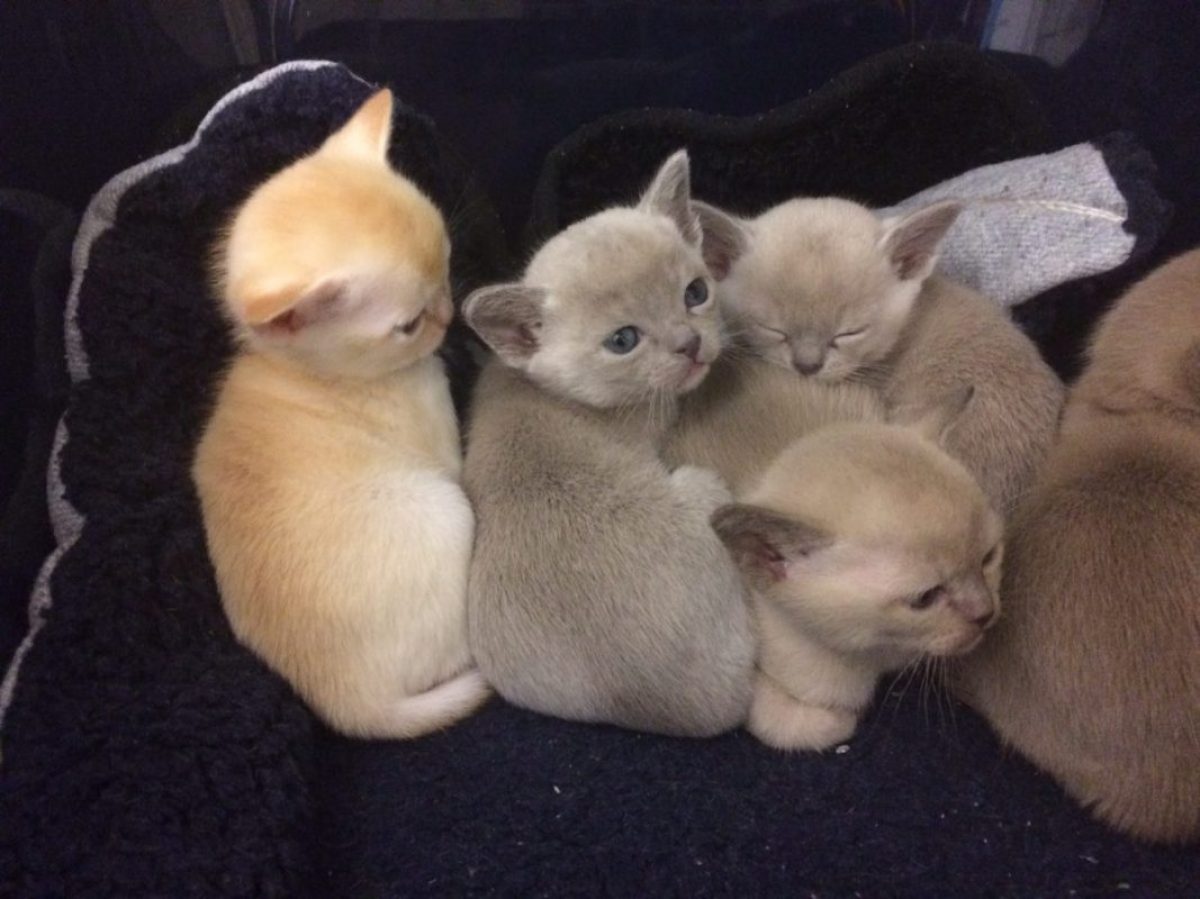
Depression caused by inbreeding tends to negatively affect traits within a breed which might be positively affected by outcrossing. The type of traits affected will certainly include; fertility, longevity, growth and well being.
Any cat, but especially those within the Burmese breed (because so few new blood lines have been imported over may years), will have an inbreeding level for a specific animal or mating outcome which can be measured by calculating an inbreeding coefficient. An inbreeding coefficient represents a probability percentage (%) for any allele (i.e. pair of genes at a specific location on the chromosome) to be identical, by descent.
Typical inbreeding coefficient percentages are as follows. This is assuming no previous inbreeding between any parents.
| Relationship | Inbreeding Coefficient |
| Mating to parent (Sire to Daughter) | 25% |
| Full Siblings (sire to dam with a common sire and dam) | 25% |
| Half Siblings (sire to Dam with a common sire or dam) | 12.5% |
| Half Cousins (sire to dam with a single common grandparent | 3.1% |
The “accuracy” of the inbreeding coefficient value that is calculated will depend on the accuracy and depth of pedigree that is recorded. For example, the accuracy of inbreeding coefficient that is calculated would be higher in an animal with 10 generations of pedigree on both the sire and dam side, compared to an animal with 10 generations on the sire side but from a dam with little or no pedigree recorded.
Some breeders will argue that “considered” inbreeding programs can produce a single “superior” outcome by concentrating on desirable genes for certain type or traits (i.e linebreeding). Of course, aiming to produce a superior outcome might just result in inferior animals through inbreeding depression or the appearance of recessive genetic conditions. So let’s explain this using a different example (horse racing) so that the odds make a significant impact.
Black Caviar has common ancestry in her pedigree such as the stallion called Vain. Vain is Black Caviar’s paternal great grandsire as well as maternal great-great-grandsire. Vain also has a second sire, Silly Season, further back in the pedigree that appears on both sides of the pedigree. Now if you’re banking on a next generation winner then you would wish for a superior outcome. Should a recessive gene pop up you might find the impact manifests as an extremely reduced bank balance. When economics weights on the outcome you really need maximum certainty.
There is no gold standard for an acceptable level of inbreeding within any breeding program. One would hope that experienced breeders would manage inbreeding rather than simply let it play out. That said, breeding programs that simply avoid inbreeding without injecting desirable genetic material from select animals, to be used within their mating programs, are unlikely to be sustainable over the longer term.
Average inbreeding coefficient levels that calculate to around 5% within any breeding program are considered low. Inbreeding levels between 5% and 10% are generally considered to be moderate levels of inbreeding that warrant more careful management. Whatever you determine as your level, containing an increase to inbreeding level over time is as important, if not more important, than managing an overall level of inbreeding within your breeding program.
Over time, higher levels of inbreeding will ultimately invite loss of genetic diversity within your breeding program. This could mean the loss of valued alleles that you may have counted upon for maintaining desirable traits. This will also put at risk a the amount of genetic variation from which to make future decisions around mating selections. Putting your head in the sand is unlikely to bring about returns you might wish for your breeding program. A very good thing is we don’t need to deal with a future racing budget.

You must be logged in to post a comment.